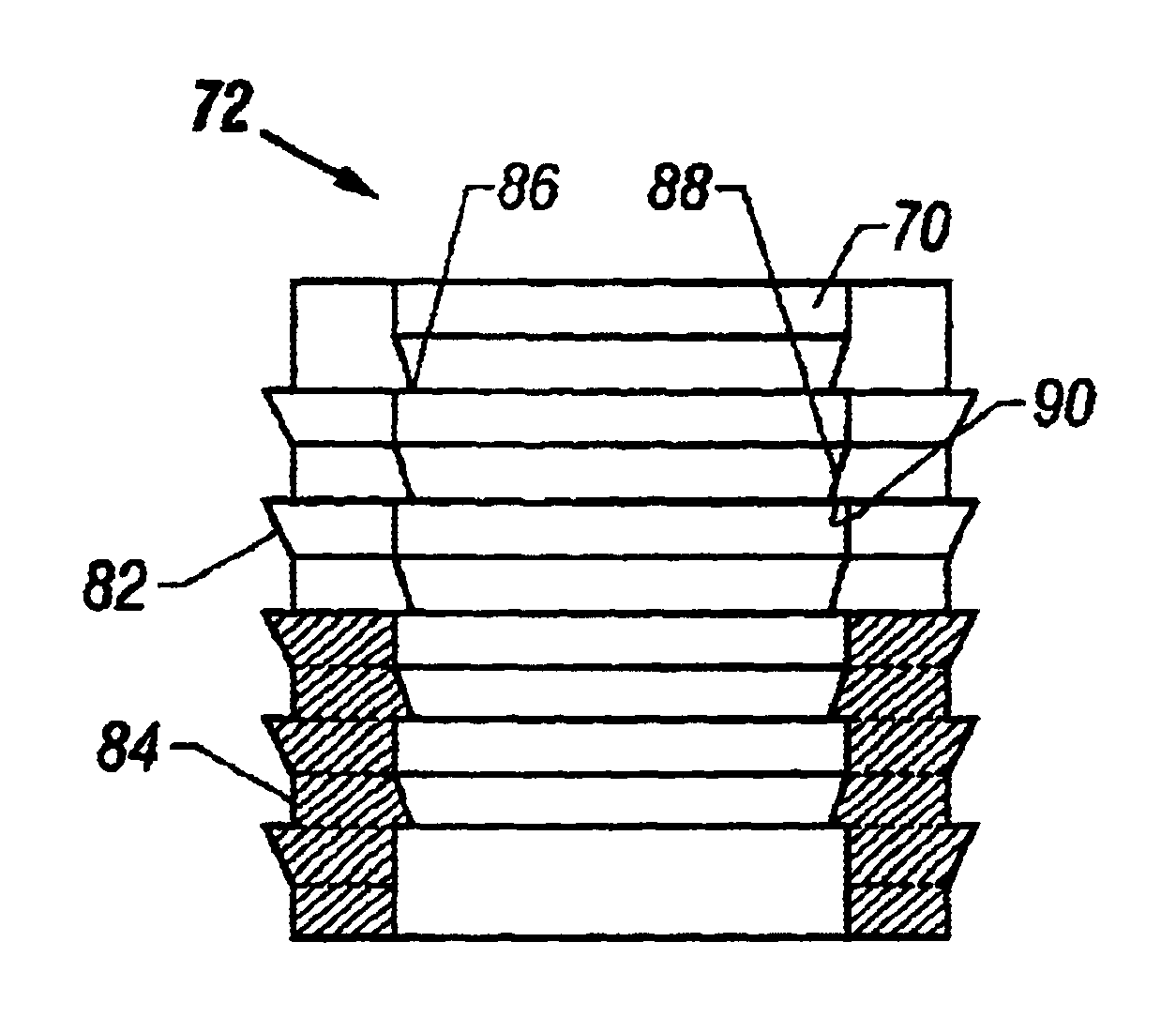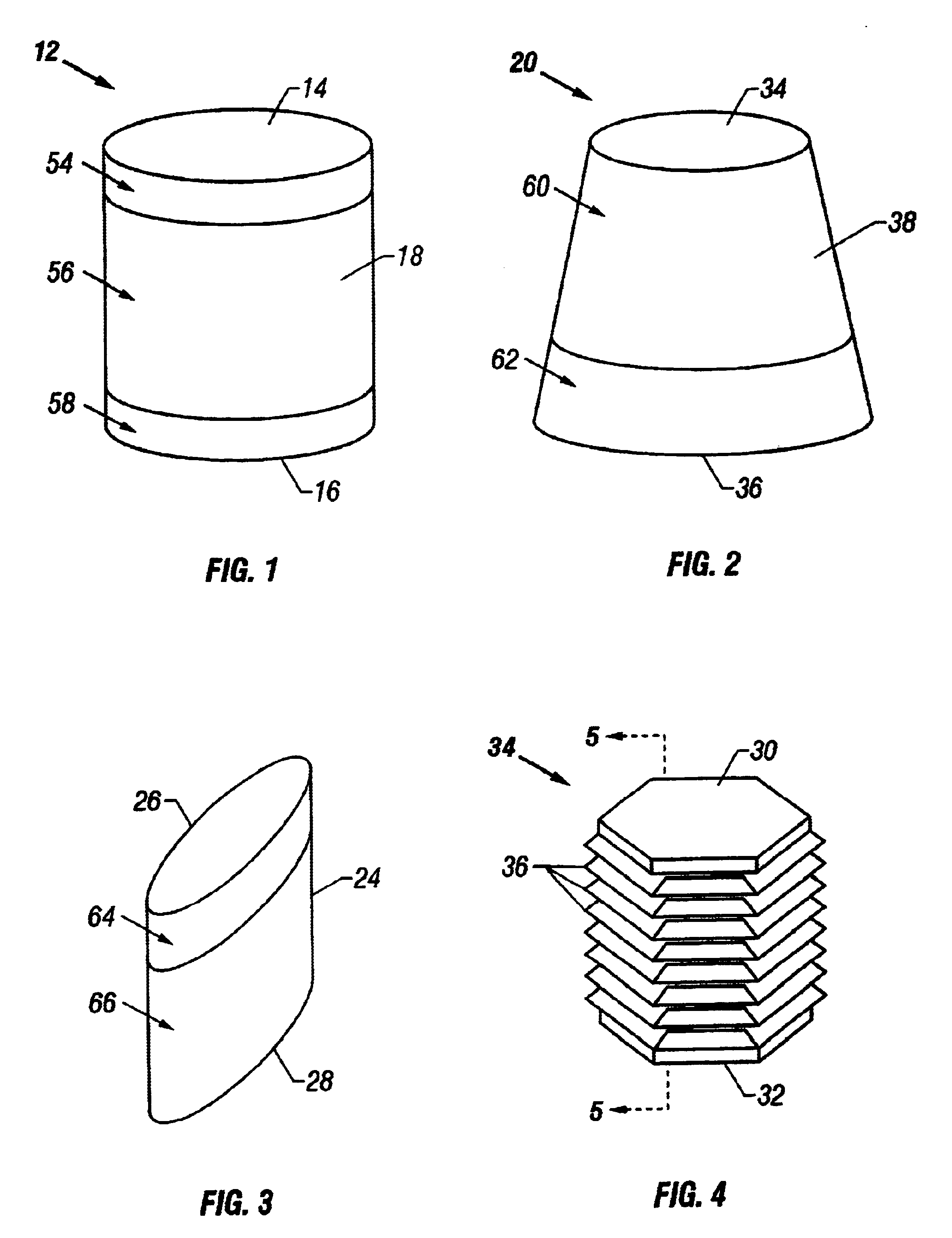Younger persons,
ranging in age from children to young adults, often engage extensively in rigorous athletic activities, such as skiing, surfing, football, basketball, and even roller blading, which frequently results in accidents which cause
traumatic injury to cartilage, particularly that surrounding the knees, elbows, and shoulders.
Osteoarthritis may also set-in following a traumatic injury to cartilage which is not repaired or is repaired improperly, leading to a further deterioration of the previously damaged cartilage.
When the defect is caused by traumatic injury and is extensive enough in size to involve a large
mass of cartilage, the damage is not capable of self-healing.
Heretofore it was not possible to repair extensive cartilage defects.
Cartilage which has become defective through damage caused by traumatic injury from accident, whether sports related or from other causes, such as an
automobile accident, as well as cartilage which has become defective as a result of deterioration due to the spread of a chronic
degenerative disease, also typically gives rise to and is accompanied by
severe pain, especially where the sites of the damage or
disease is proximal to or constitutes part of an articulating
joint surface, such as the knee.
The damaged or diseased portion of the cartilage is usually also accompanied by swelling of the surrounding tissue; and, where an articulating joint is involved, a disruption in the flow of lubricating
synovial fluid around the joint often occurs, which, in addition to being a cause of the source of pain, usually leads to further
mechanical abrasion, wear, and deterioration of the cartilage itself, finally resulting in the onset of
osteoarthritis and complete disablement of the articulating joint, ultimately requiring complete replacement of the joint.
In the case of very young patients, however, complete replacement of a joint is problematic in that the patient's overall
skeletal bone structure is not yet
fully developed and is still growing, so that the replaced joint may actually be outgrown and no longer be of appropriate size for the patient when their fully matured adult size, stature, and skeletal structure is attained.
Moreover, in the past, many replacement knee,
elbow joints and shoulder joints have typically had a maximum active useful life of only about ten years, due to
wear and tear and
erosion of the articulating surfaces of the joint with repetitive use over time, thereby necessitating periodic
invasive surgery to replace the entire joint.
There are, however, several major problems and disadvantages associated with all of the various prior art cartilage replacement devices and methods which have heretofore been proposed.
The use of naturally derived cartilage plugs presents the major problems of lack of availability, limitations on the size of the repair that can be effected, and
high potential for infection and transmission of
disease.
Where the portion of damaged or diseased cartilage that is to be replaced is more extensive, however, such a self-harvesting procedure is not feasible because a sufficiently large plug cannot be extracted from another site without causing damage to or a weakening of the cartilage and underlying bone at the place of harvesting, or when being harvested from
a site at or near another articulating joint, without causing damage to the
operability of the articulating joint itself at the point of harvesting.
Moreover, there are a limited number of suitable locations on the body from which cartilage can be extracted for use elsewhere.
Depending on the age and overall health of the patient, as well as on other considerations, it may not be feasible to perform both procedures at the same time.
Such a dual procedure is
time consuming and costly, and may be objected to on cost grounds in some insurance or managed care contexts.
This alternative, however, also presents the same problems of limited sources of availability and potential for infection or transmission of disease.
In cases where it is necessary to reset larger portions of damaged or diseased cartilage from a patient, although procedures utilizing natural cartilage replacement plugs derived from cadaveric sources are not limited by considerations as to the amount of cartilage that can be excised from a particular location in order to preclude damage to or a weakening of the remaining cartilage and / or the joint, at the donor site, as occurs in a self-harvesting situation, there are still limitations as to the total amount of suitable cartilage that can be harvested from cadaveric sources, and the overall reliability of obtaining acceptable cadaveric cartilage sources at all is not high.
Some of the obstacles to this latter method involve the selection of one or more appropriate growth factors; the selection of appropriate delivery vehicles for controlled, time-release of the growth factors to ensure that the proper concentration of
growth factor is maintained at the
implant site; and
necrosis of immature or newly regenerated tissue under stress or when subjected to loading conditions.
The principal disadvantages of this method are that it is very complicated and
time consuming, requiring up to several months to fully culture the
cartilage cells to the point where they are available for use in a preformed shape.
This method also faces the obstacles facing all such long-term methods mentioned above.
For example, the use of collagen sponges has been proposed as an
implant to promote
cartilaginous tissue ingrowth, however, this method has not demonstrated good long-term success.
From a practical viewpoint, these methods are limited to those applications where the surrounding cartilage forms a natural cartilage
capsule that is capable to acting as a mold to contain and shape the injected
liquid composition until it sets.
A major
disadvantage of using reactive
polyurethane-based systems is that residue diisocyanate in the reactant becomes hydrolyzed in the presence of
moisture, to
diamine, which is both toxic and carcinogenic.
A
disadvantage associated with such approach is inherent in the lack of any physical anchoring to the underlying bone.
A
disadvantage and limitation of this method and this type of cartilage replacement device is that it requires
cell ingrowth into the
felted backing for biologic fixation of the device.
Their device is composed of a layer of
polymer attached to a porous felt like backing which may fatigue with motion and result in
delamination.
Moreover, this type of failure may occur before biologic fixation occurs resulting in failure of the device.
 Login to View More
Login to View More  Login to View More
Login to View More 


